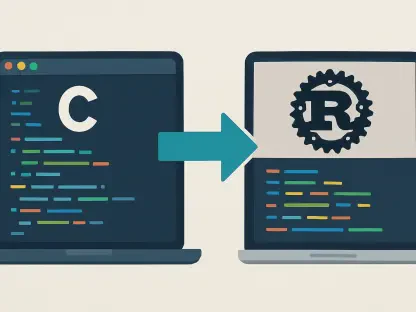In today’s digital age, artificial intelligence continues to reshape the landscape of various industries, and software development is no exception. The recent launch of OpenAI’s GPT-4.1 models, now integrated into Microsoft Azure OpenAI Service and GitHub, promises to bring a transformative change to the coding and development spheres. With enhanced capabilities in coding, instruction adherence, and long-context comprehension, these advanced models support up to 1 million tokens of context and have a knowledge cutoff of June 2024. Developers now have tools optimized for real-world coding scenarios, such as frontend development and reliable format-following, paving the way for more efficient and precise code generation.
Integration with Microsoft Azure and GitHub
Microsoft’s incorporation of GPT-4.1 models into its Azure and GitHub platforms signifies a major milestone in AI-assisted software development. One notable development is the future support for supervised fine-tuning, enabling enterprise customization of GPT-4.1 and GPT-4.1-mini models to align with specific datasets, tone, terminology, and tasks. These fine-tuned models are managed through Azure AI Foundry, allowing businesses to tailor the AI’s functionalities to meet their unique needs. Such customization ensures that enterprises can leverage GPT-4.1’s capabilities to enhance productivity and maintain consistency across their projects.
On GitHub, GPT-4.1 is accessible via Copilot and GitHub Models. To activate GPT-4.1 in Copilot, Enterprise administrators need to enable it through a new policy in Copilot settings. This integration promises significant performance improvements over previous models, particularly in coding accuracy and efficiency. Developers can access GPT-4.1 through Visual Studio Code and GitHub.com chat as GPT-4.1 (Preview) and test it alongside other models in the GitHub Models playground. This seamless integration into widely-used platforms underscores the model’s potential to become a staple tool in modern software development.
Advancements and Flexibility for Developers
The introduction of GPT-4.1 models has been marked by several key advancements that cater to the evolving needs of developers and enterprise users. One of the standout features is the model’s ability to handle large contexts, making it suitable for complex coding tasks that require comprehensive contextual understanding. With a knowledge cutoff of June 2024, GPT-4.1 is equipped to provide up-to-date information and adhere to contemporary coding standards and practices.
Moreover, the enhanced instruction adherence capabilities of GPT-4.1 ensure that the generated code aligns closely with specified formats and requirements, reducing the risk of errors and inconsistencies. This is particularly beneficial for frontend development, where precision and attention to detail are paramount. The availability of mini and nano variants offers additional flexibility, allowing developers to choose models that best fit their project requirements, whether they prioritize speed, efficiency, or detailed context handling.
The ability to test and compare GPT-4.1 with other models in platforms like GitHub further empowers developers to make informed decisions about which AI tool best suits their workflow. This comparative analysis is instrumental in optimizing development processes and enhancing overall productivity, making GPT-4.1 a valuable asset in the toolkit of modern developers.
Conclusion
In today’s digital era, artificial intelligence is continually transforming numerous sectors, with software development being no exception. The recent release of OpenAI’s GPT-4.1 models, now integrated into Microsoft Azure OpenAI Service and GitHub, marks a significant shift in coding and development. These advanced models offer enhanced capabilities, including improved coding accuracy, better adherence to instructions, and long-context comprehension, supporting up to 1 million tokens of context with a knowledge cutoff of June 2024. Developers gain access to tools perfectly optimized for real-life coding needs, such as frontend development and format reliability, facilitating more efficient and precise code generation. This integration promises to revolutionize workflows, allowing developers to generate code faster while minimizing errors. Consequently, the software development landscape is poised for substantial improvement in terms of productivity and quality, underscoring the transformative potential of AI in the tech industry.









